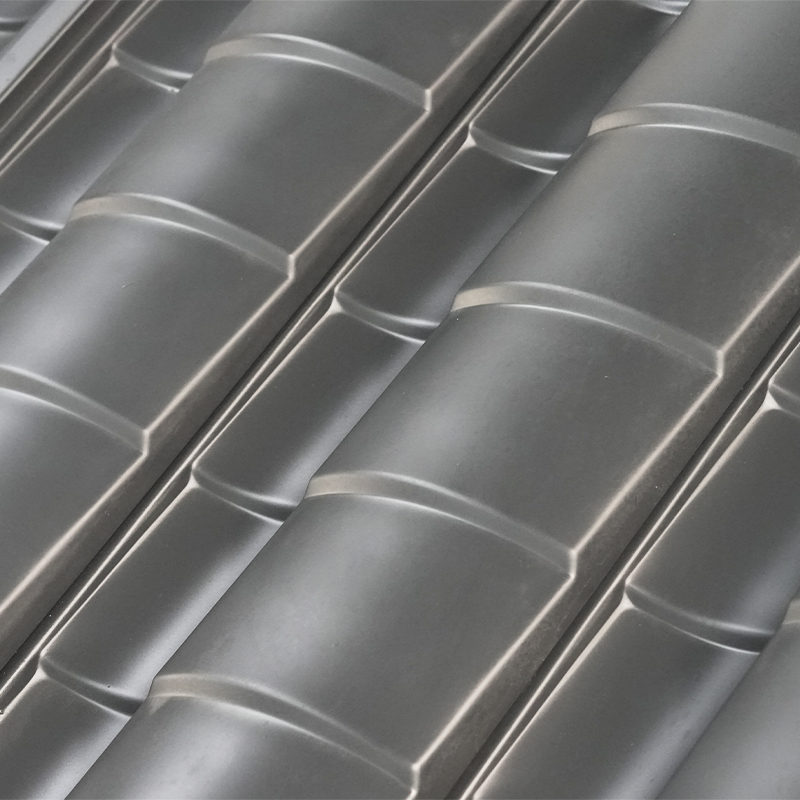Content
1. Why choose an aluminum roofing sheet
Aluminum roofing sheet is lightweight, corrosion-resistant, and reflects sunlight, which can lower attic temperatures. Its low density reduces load on the roof structure and simplifies handling during installation. For coastal or humid environments, aluminum’s natural oxide layer provides strong protection against rust compared with ordinary steel.
2. Key material properties that matter
Understanding three material properties helps choose the right aluminum roofing sheet: alloy grade and temper (which determine strength and formability), coating type (painted PVDF, plastisol, or bare mill finish), and substrate thickness (expressed in mm or gauge). Thicker gauges improve impact resistance but add weight and cost.
Alloy & temper
Common alloys for roofing include 1100 and 3003. 3003 offers better strength while remaining formable for profiles like corrugated or standing seam. Specify temper if structural bending is required during installation.
Coatings and finishes
Painted PVDF coatings give long-term color stability and weather resistance; plastisol provides thicker protection and a textured finish. For industrial or low-budget projects, pre-anodized or mill finish may be acceptable where appearance and long-term color retention are less important.
3. Practical installation steps
Correct installation prevents leaks, wind uplift, and premature damage. Below are concise, practical steps installers follow for most aluminum roofing sheet systems.
- Measure and order panels allowing for roof slope, overhangs, and waste (typically 5–10% extra for cut-offs).
- Prepare the deck: flat, dry, and rigid. Install a suitable underlayment (breathable membrane or ice & water shield in cold climates).
- Start at the eave. Align the first panel square to the roof edge to avoid cumulative offset.
- Fasten using recommended fasteners or clips for the profile; allow for thermal expansion by using screws with neoprene washers or floating clips where specified.
- Seal laps and penetrations with compatible sealants; avoid sealants that react with aluminum or painted coatings.
- Trim and flash carefully at ridges, valleys, chimneys and gutters to maintain water shedding and to prevent trapped debris.

4. Common mistakes to avoid
- Using incompatible fasteners (e.g., plain steel) which can cause galvanic corrosion when in contact with aluminum.
- Over-tightening screws that prevent thermal movement and lead to oil-canning or paint failure.
- Skipping underlayment on low-slope roofs — aluminum panels alone are not a substitute for proper underlayment.
5. Maintenance checklist
Routine checks extend service life. Use the table below for a seasonal maintenance routine and expected action.
| Interval | Inspection Item | Action |
| Yearly | Surface condition, fasteners, flashings | Tighten/replace fasteners; touch up scratches with compatible paint; clear debris. |
| After severe storms | Loose panels, dents, lifted flashings | Secure panels, replace damaged sections or flashings promptly. |
| Every 3–5 years | Recoat or touch-up painted finishes (as needed) | Apply manufacturer-recommended paint systems to maintain warranty and appearance. |
6. Cost and performance comparison (quick view)
The following brief comparison highlights where aluminum roofing sheet typically sits versus other common materials when considering weight, corrosion resistance and lifecycle cost.
- Asphalt shingles: Lower initial material cost but shorter life and higher maintenance; heavier roof deck load per square meter.
- Galvanized steel: Often cheaper than painted aluminum but may corrode sooner in coastal environments unless properly coated.
- Aluminum: Competitive lifecycle cost for coastal or corrosive environments due to low maintenance and long service life.
7. Selecting the right supplier and warranty tips
Ask suppliers for product datasheets specifying alloy, coating system, thickness, and test results (salt spray or fade resistance if available). Confirm what the warranty covers—paint adhesion, color fade, substrate failure—and the conditions that void it (improper fasteners, poor installation, or incorrect storage).
If you focus on the points above — picking the appropriate alloy and coating, allowing for thermal movement during fastening, and keeping to a simple seasonal maintenance routine — an aluminum roofing sheet can deliver long-lasting performance with lower lifecycle hassle compared with many alternatives.




 English
English русский
русский Español
Español عربى
عربى















